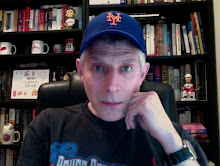They weren't literal kids but Cincinnati Kids, one of the original six franchises in the Major Indoor Soccer League, the MISL that launched 40 years ago today.
 |
| From volume 1, issue 2 of Missile, the official magazine of the Major Indoor Soccer League |
His star power wore off quickly though as the host Arrows downed der fussball kinder 7-2 before 10, 376 curious onlookers.
A week later and 120 miles south, the Philadelphia Fever opened to a sellout crowd of 16, 259 at the Spectrum arena. Game on!
Indoor soccer, the mutant spawn of outdoor soccer and ice hockey: six guys per side, five chasing a bright red ball around an astroturf-covered NHL-size rink, trying to slam it off the walls, off each other, and into a 6 1/2-foot high by 12-foot wide goal set into the end boards and guarded by the sixth.
Human pinball.
Briefly dubbed hoc-soc -- a hat tip to its genetics -- the concept was tried out in 1971 by the Division I outdoor North American Soccer League. In the winter of '74, the NASL tried it again with a series of exhibition matches against a touring Soviet squad, most famously one with the Philadelphia Atoms that drew 11,790 fans to the Spectrum. That contest begot another the next year against the league's glamour franchise, the New York Cosmos.
 |
| Shep Messing, cover boy and interviewee |
Foreman would be the MISL's founding commissioner, with Tepper as his deputy. The league, wherever possible, would rely on American players, a commitment mostly honored in the breach.
Still, its first signee was ex-Cosmos star goalkeeper Shep Messing, who once posed for Viva magazine wearing nothing but a soccer ball and would soon publish an autobiography, The Education of An American Soccer Player. He'd play for the New York Arrows.
In addition to New York, Cincinnati and Philadelphia, the founding franchises of the MISL included the Cleveland Force, Pittsburgh Spirit and Houston Summit Soccer, named for a home arena that would one day become evangelist Joel Osteen's megachurch.
They'd play a 24-game season capped by a two-tiered playoff in March 1979. With rosters dominated by members of the NASL's Houston Hurricanes and Rochester Lancers, the Summit and Arrows quickly became the class of the league.
 |
| Opening night highlights... |
 |
| ... and headlines. |
Houston's biggest star was Finnish forward Kai Haaskivi. New York countered with Yugoslavian Steve Zungul, available to the new league only because he'd defected from his homeland and, at that nation's insistence, was then banned from outdoor play by FIFA.
Zungul's uncanny scoring ability would make him the greatest player in MISL history, while earning the nickname "the Lord of All Indoors." His Arrows wingman was Canadian teen sensation Branko Segota.
Other notable players that first year included Philly forward Fred Grgurev, who won the scoring title, posting 46 goals and 28 assists; Cincinnati's Ty Keough -- whose father Harry represented the U.S. in the 1950 World Cup tourney -- and Cleveland's British-born Alan Hamlyn, who received the Bronze Star for his military service in Vietnam after being drafted while still just a green card-holding U.S. resident.
In February, each team played an exhibition match against the Soviet Union's touring club, Spartak Moscow, which rampaged to a 5-1 record. They lost only to Houston, 7-5, and closed out their visit with excessive force, crushing Cleveland 20-2.
 |
| Spartak Moscow, the red menace |
The Arrows won, two games to none, capturing the MISL's first championship. Zungul was its first MVP.
For the most part, MISL hit its target audience and by season's end, though its league-wide average attendance per game was just below 4,500, plans were unveiled to expand to Buffalo, Detroit and perhaps two more cities.
Rose's Kids -- undermined by the free agent baseball star's decision to sign with the Philadelphia Phillies and by their junior leaseholder status at the city's Riverfront Coliseum, which they shared with the doomed World Hockey Association's Cincinnati Stingers -- would not return for year two.
Defector, FIFA outlaw and lord of all indoors
|
All of this ramped up the pressure on the already shaky NASL, which committed ever more to meeting the MISL threat on its own ice-covering artificial turf. Its resources largely depleted, the outdoor league which once boasted 24 franchises across the continent collapsed after its 1984 season.
Four of its franchises found refuge with the all-indoor-all-the-time MISL and suddenly the mutant spawn, playing a bastardized version of the world's most popular sport, was the top soccer league in America.
-- Follow me on Twitter @paperboyarchive




